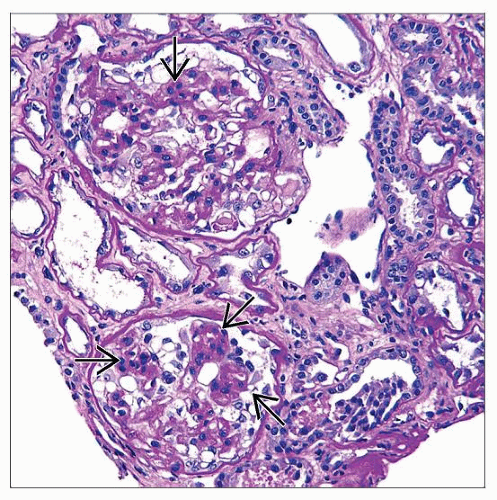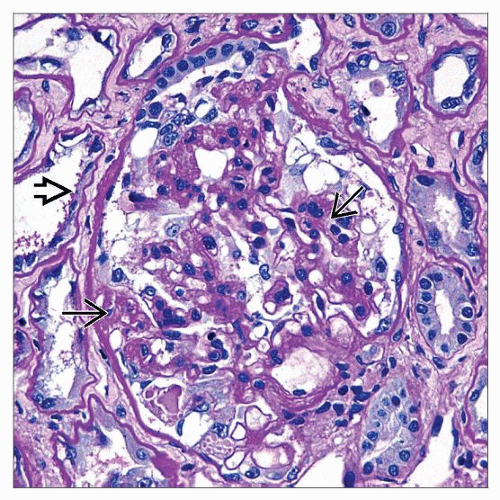Pamidronate-induced Collapsing FSGS
A. Brad Farris, III, MD
Key Facts
Terminology
Collapsing FSGS secondary to use of pamidronate, a bisphosphonate inhibitor of bone resorption
Clinical Issues
HIV-negative patients with nephrotic syndrome and severe renal insufficiency, typically older and white
Treatment: Cessation of pamidronate
Microscopic Pathology
Collapsing FSGS
Hyperplastic and hypertrophic glomerular epithelial cells
Tubular injury and simplification
IF: IgM and C3 segmentally stain glomerular tuft
EM: GBM wrinkling and collapse
Podocyte foot processes totally effaced
TERMINOLOGY
Abbreviations
Focal segmental glomerulosclerosis (FSGS)
Definitions
Collapsing FSGS secondary to bisphosphonates such as pamidronate (Aredia) used in the treatment of osteolytic metastases, Paget disease, hypercalcemia of malignancy, and postmenopausal osteoporosis (PMO)
ETIOLOGY/PATHOGENESIS
Mechanism Uncertain
Bisphosphonate binds calcium phosphate crystals within bone matrix, thus inhibiting osteoclast activity
Podocyte dysfunction is thought to be cause of collapsing FSGS
Pamidronate is thought to interfere with podocyte function and metabolism, similar to its metabolic effects on osteoclasts
Hypothesis: Podocytes leave their terminally differentiated state and enter the cell cycle, acquiring a more immature phenotype
Evidenced by loss of podocyte synaptopodin and increased Ki-67 expression
Tubular and podocyte mitochondrial injury may also be present
No evidence of immunologic mechanism (scant infiltrate)
Drug Exposure
Patients typically used higher than recommended doses
Stay updated, free articles. Join our Telegram channel

Full access? Get Clinical Tree







